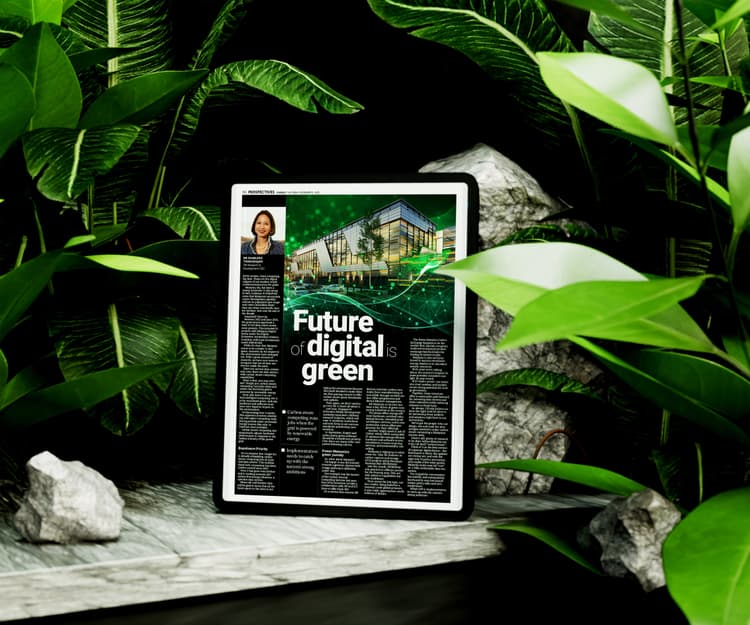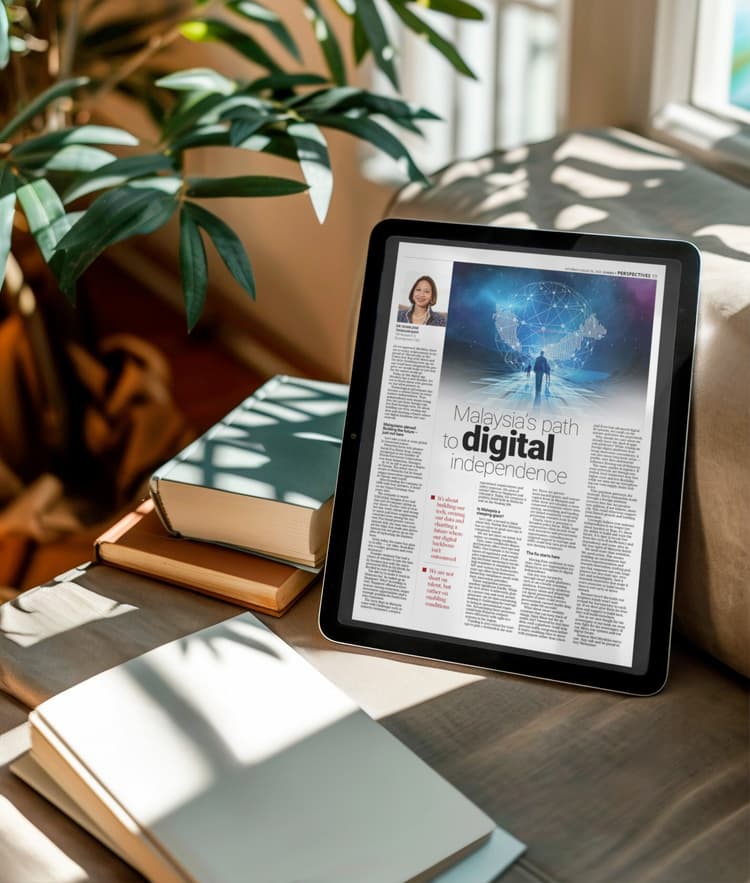At a digital crossroads

METAVERSE is a word we’ve heard plenty about in the last three to five years. This phenomenon has often been compared with digital applications, begging the question why should countries or industries invest in the metaverse technology?
The truth is, both sit on the same technology spectrum, one rooted in a virtual 3D world, and the other in the physical world.
Today, however, as the metaverse hype cools, there has been a breakout player gaining traction all over the world. The emergence of a “digital twin” that bridges the 3D virtual world and real-world impact.
I’d like to think of digital twins as virtual replicas of physical assets, systems or cities that can be simulated, monitored and optimised in real time, enhancing sectors like education, aviation, energy and smart infrastructure.
What do they do, you might ask? Cut costs, innovate and improve efficiency to start.
Why are they important? Because industries today are shifting away from experimental concepts toward technologies that deliver immediate and measurable results.
Their impact in value is indeed significant, truth be told. According to Gartner, digital twins represent a US$379bil opportunity by 2034. In 2024, digital twins were valued at US$35bil.
Malaysia today is at an important crossroad. Digital twins present both a challenge and an opportunity.
The challenge is whether the nation will remain a consumer of these technologies or will it step up to become a developer and innovator.
Malaysia has numerous advantages. Other than being the Asean Chair this year, the nation is also fast becoming a hub for data centres. This has further increased our standing on the global stage.
So where can digital twins fit in here? Let’s look at some of the industries that are already using this immersive technology.
Kuala Lumpur has advanced its smart city vision with a digital twin of the city that enables real-time urban planning, traffic management and emergency response simulations. The Kuala Lumpur Command & Control Centre is set to function like a central nervous system.
In construction, mega infrastructure projects like the Klang Valley mass rapid transit and the Pan Borneo Highway are both leveraging digital twin technology to improve construction processes.
More simply put, it integrates Building Information Modelling, Geographic Information System, drone data and reality modelling to create accurate digital replicas, so the execution is better.
Malaysia’s water treatment sector has not been left behind. The first digital twin water treatment plant has been completed, working to reinforce water security by enabling better resource and operational management through digital simulation and monitoring.
But with such an inventive technology, challenges are rife. Implementing digital twins requires significant startup costs. Think Internet of Things (IoT) devices, sensors, data analytics platforms and infrastructure upgrades.
Digital twins involve collecting, storing and processing huge amounts of sensitive data. This raises a concern on cybersecurity – data breaches and cyberattacks, especially in industries like healthcare and communication.
This also leads to regulatory and ethical issues. When sensitive information or human behaviour is replicated, careful navigation is needed to comply with laws and build trust.
And then there is an issue we hear about often, brain drain. Are there enough skilled workers to design and manage digital twins so there are no delays?
I recall reading that 5.6% of the population has relocated abroad. That is 1.86 million people not here in this country, using their skills to better the nation.
At TM R&D, we have explored the metaverse technology in two use cases.
The first is the MMU Verse, a digital twin of Multimedia University where students can join classes and interact with classmates in real time. It goes so far to even allow students to explore the campus facilities before signing up as students.
So, imagine knowing where your classrooms would be, where you could buy lunch or plan ahead on what social clubs you want to join. I’m pleased to say, this will be launched very soon, so keep an eye out for this exciting announcement!
The second use case is the Smart Urban Forestry tool designed to transform how urban trees and forest assets are monitored, managed and optimised.
This solution integrates Artificial Intelligence, IoT, computer vision and dashboard analytics to provide real-time, actionable insights into tree health, biomass and carbon stock.
Complementing the mobile capture, TM R&D has implemented “smart dashboards” that aggregate data across multiple tree sites, forest zones or urban green-spaces.
Today, there is still more work to be done to bridge the gap between the concept of digital twins and the practical applications. With positive industry collaboration, we can scale digital twin platforms nationwide, ensuring accessible, secure and high-performance digital services.
The strategy is to work with agencies like local councils, urban planning authorities and infrastructure regulators to align digital twin projects with national development goals and regulatory frameworks.
By fostering a coordinated strategy and shared digital infrastructure, Malaysia can enable the creation of high-performance, secure and accessible digital twin services.
No one wants to be left behind, and this is why Malaysia should move forward with this. It isn’t just a trend.
The metaverse may have started as a flashy buzzword, but what has quietly emerged in its wake is something with far deeper roots in the real world.
Digital twins are no longer just futuristic concepts; they are becoming practical tools that can reshape how we design, build and manage everything from factories to entire cities.
Turning that into a reality will take more than just good, solid technology. It will require a collective push. So, here’s to working with academia for research, industries for use cases and governments for frameworks.
Pilot projects will be the proving ground, showing Malaysians how these virtual mirrors can drive real-world impact. If the pieces come together, digital twins could well be the moment where Malaysia shifts from chasing digital trends to setting them.
___________________________________________________
This article was first published in the StarBiz 7, Issue November 8, 2025: Nuclear on the horizon
To access the PDF version, Click Here
To read the full Star epaper: Click here
You May Also Like


